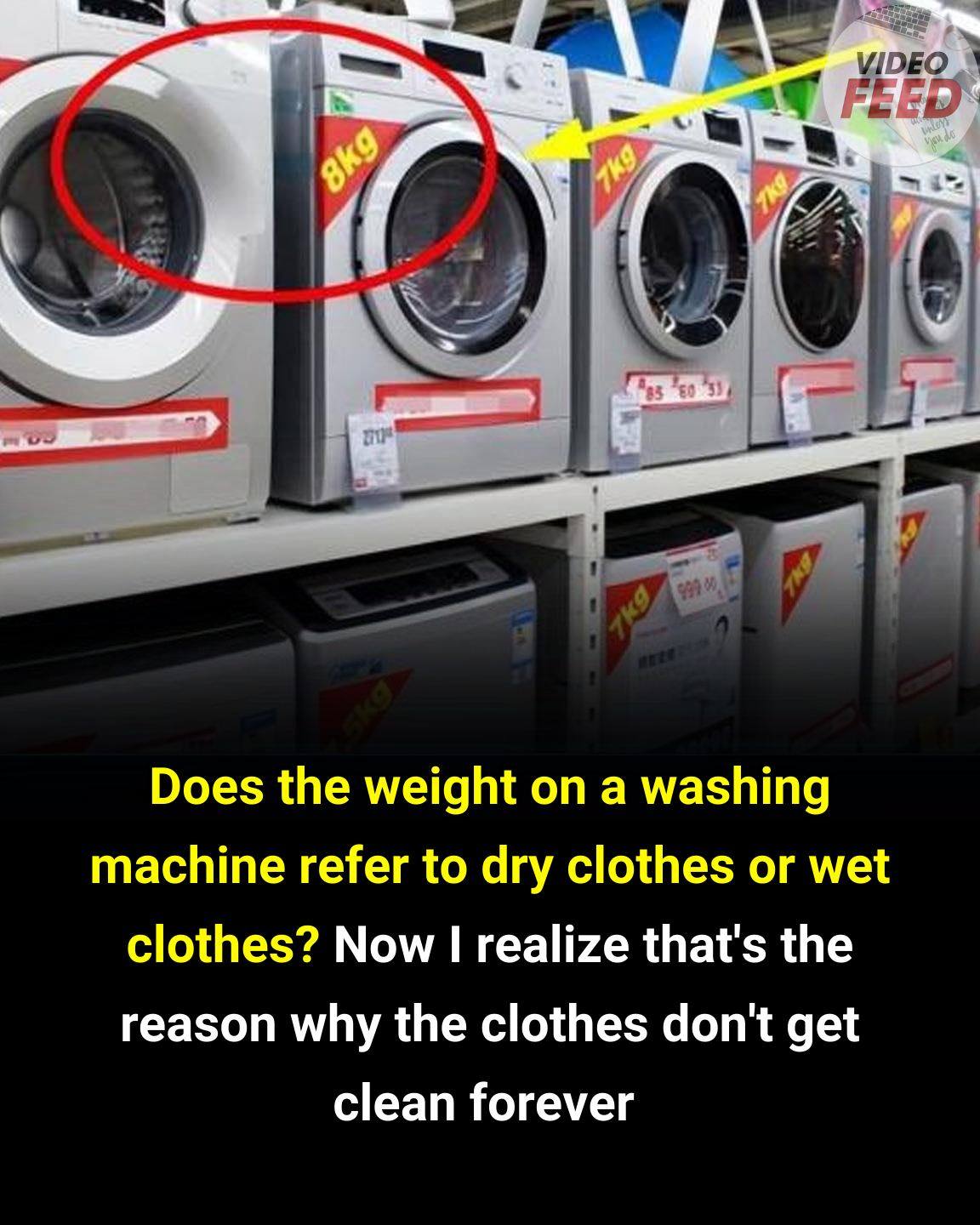
When shopping for a washing machine, you might notice labels like “7kg” or “10kg” prominently displayed. But what do these numbers actually signify? Do they refer to the weight of dry clothes, wet clothes, or something else entirely? Understanding this can help you use your machine more efficiently and prolong its lifespan.MoneySavingExpert Forum+1Domex Ltd+1
Understanding Washing Machine Capacity
The weight capacity indicated on a washing machine refers to the maximum weight of dry laundry the machine can handle in a single load. For instance, a 7kg washing machine is designed to wash up to 7 kilograms of dry clothing. This specification is crucial because overloading the machine can lead to subpar cleaning results and potential damage to the appliance.Domex Ltd
It’s important to note that wet clothes weigh significantly more than dry ones. However, the machine’s capacity is based on the dry weight of the laundry, not the wet weight. This standardization helps users estimate appropriate load sizes regardless of the moisture content after washing.In The Wash+1MoneySavingExpert Forum+1
Why Dry Weight Matters
Manufacturers use dry weight as a consistent measure because it’s the most practical and uniform standard. Wet weight can vary depending on factors like fabric type, water absorption, and spin efficiency. By using dry weight, users have a clearer guideline for loading their machines appropriately.Better Homes & GardensSouthern Living+1New York Post+1
Overloading a washing machine with wet clothes can strain the motor and suspension system, leading to increased wear and potential breakdowns. Conversely, underloading the machine isn’t energy-efficient and can result in less effective cleaning.In The Wash
Estimating Laundry Weight
If you don’t have a scale to weigh your laundry, you can estimate the weight using common household items:The Spruce
- 1kg of laundry: Approximately 5 shirts or a pair of jeans and a shirt.Domex Ltd
- 5kg of laundry: Around 25 shirts or 5 pairs of jeans and 5 shirts.
- 7kg of laundry: About 35 shirts or 7 pairs of jeans and 7 shirts.
These estimates can help you gauge how much laundry to load without exceeding your machine’s capacity.In The Wash+4rinse.com+4Weighingnews+4
Optimal Loading Practices
For the best washing results and to maintain your machine’s health, consider the following tips:
- Fill the drum about two-thirds full: This allows clothes to move freely, ensuring thorough cleaning.Weighingnews+2rinse.com+2Domex Ltd+2
- Leave a hand’s width of space at the top: This space ensures the load isn’t too tight, preventing strain on the machine.Better Homes & Gardens
- Balance the load: Mix heavy and light items to distribute weight evenly, reducing vibrations during the spin cycle.rinse.com
Consequences of Improper Loading
Overloading or underloading your washing machine can have several negative effects:In The Wash
- Overloading:
- Clothes may not clean properly due to restricted movement.
- Increased wear and tear on machine components.New York Post+1rinse.com+1
- Higher energy and water consumption.Better Homes & Gardens+3news.com.au+3Constellation Blog+3
- Underloading:
- Wastes water and energy.Reddit+3Domex Ltd+3Weighingnews+3
- Can cause imbalance during the spin cycle, leading to excessive vibrations.New York Post+2Southern Living+2rinse.com+2
Selecting the Right Machine Capacity
Choosing a washing machine with the appropriate capacity for your household needs is essential:
- 5-6kg: Ideal for individuals or couples.Reddit+3In The Wash+3Domex Ltd+3
- 7-8kg: Suitable for small families.beko.co.uk+3In The Wash+3Domex Ltd+3
- 9-10kg: Best for medium to large families.beko.co.uk+2In The Wash+2Domex Ltd+2
- 11-12kg: Designed for large households or those who wash bulky items frequently.MoneySavingExpert Forum+5Weighingnews+5news.com.au+5
Selecting the right capacity ensures efficient washing and energy use, reducing the number of loads needed.
Final Thoughts
Understanding that the weight capacity of a washing machine refers to the dry weight of clothes is crucial for optimal use. By adhering to the recommended load sizes and following best practices, you can ensure your laundry is cleaned effectively while extending the life of your appliance.
Remember, proper loading not only protects your machine but also contributes to energy and water conservation, making your laundry routine more sustainable and cost-effective.



